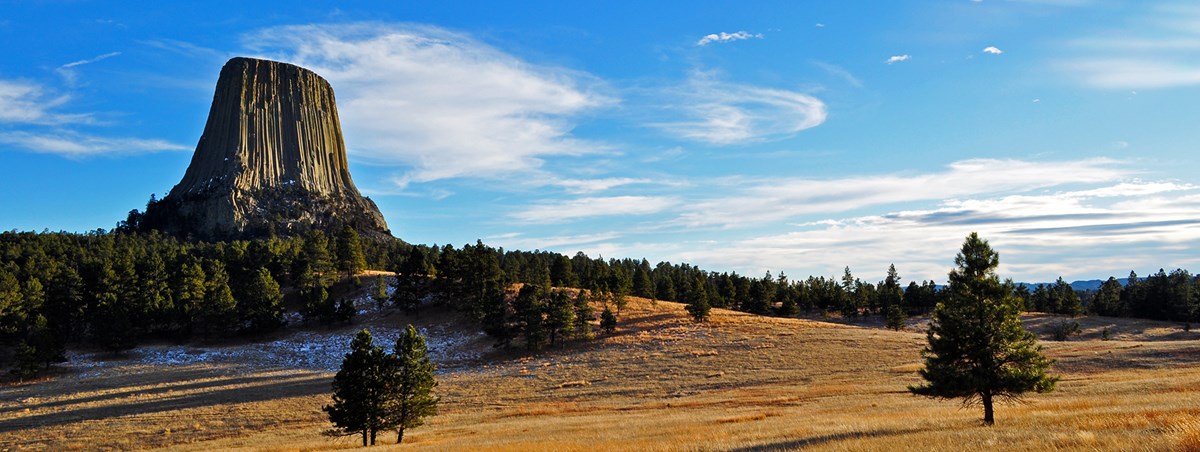News Release
You are viewing ARCHIVED content published online before January 20, 2025.
Please note that this content is NOT UPDATED, and links may not work. For current information,
visit https://www.nps.gov/aboutus/news/index.htm.

S. Carter/NPS
News Release Date: January 24, 2020
Contact: Larry Perez, (970) 267-2136
DEVILS TOWER NATIONAL MONUMENT, WY – The National Park Service (NPS) recently published a report on advances in the use of scenario planning as a tool to evaluate the vulnerability of park features and develop potential management actions in light of climate change.Climate change is widely recognized as a significant challenge for the management of national parks and other protected areas. But some uncertainty exists about how landscapes will respond to changing local conditions. Exploring multiple possible climate futures simultaneously--the essence of scenario planning--can help paint a more inclusive picture of possible impacts, and identify management actions with the greatest potential for success.
Mean annual temperature has increased 1.4 °F in Wyoming since the early 20th century, and continued warming is expected to impact a wide range of important features at Devils Tower National Monument, including water, wildlife, ceremonial sites, and historic buildings.
“Staff and partners work extremely hard to preserve natural and cultural resources in the nation’s first national monument,” said Devils Tower Superintendent Amnesty Kochanowski. “It is our responsibility to recognize and anticipate changing conditions.”
Properly accounting for uncertainties around climate impacts demands new modes of thinking that extend beyond traditional planning timelines and processes. In the report Climate Change Scenario Planning for Resource Stewardship: Applying a Novel Approach in Devils Tower National Monument, authors describe how a team of subject matter experts pioneered an approach for including robust climate-resource scenarios in a comprehensive NPS planning process.
The new report explains how scenario planning was used at Devils Tower in the context of a pilot project to dovetail with long-range NPS planning. Using four distinct climate projections, the team developed a suite of climate-resource response scenarios for Devils Tower that were plausible, relevant, and divergent enough to challenge entrenched thinking. Impacts to park features and potential management responses were analyzed across scenarios and operationalized in the form of climate change-informed resource stewardship goals and activities selected and adopted by park staff for the park’s Resource Stewardship Strategy.
“Devils Tower National Monument’s willingness to work with us on this experimental process provided an important opportunity to pull together key partners from within and beyond the NPS,” said report lead and NPS Climate Change Response Program ecologist Gregor Schuurman. “We road-tested methods that we have been honing for several years and we are excited about the results, both in terms of climate-smart management goals at Devils Tower and methodological advances that we are already applying in our work with other parks.”
“We are grateful for former Devils Tower National Monument Resource Manager Rene Ohms, Dr. Schuurman and colleagues for their foresight to initiate this process,” said Kochanowski. “The Resource Stewardship Strategy will benefit the park for decades. Ultimately, it helps ensure resources are unimpaired for the enjoyment of current and future generations.”
In recent years, scenario planning has been used to consider the breadth of uncertainty around climate change vulnerability in places like Badlands National Park and Apostle Islands National Lakeshore. These earlier efforts suggest the tool can benefit planning efforts across the National Park System, and lessons drawn from this groundbreaking work at Devils Tower are being applied in the development of guidance for climate change specialists and managers across the NPS.
Last updated: February 5, 2024
